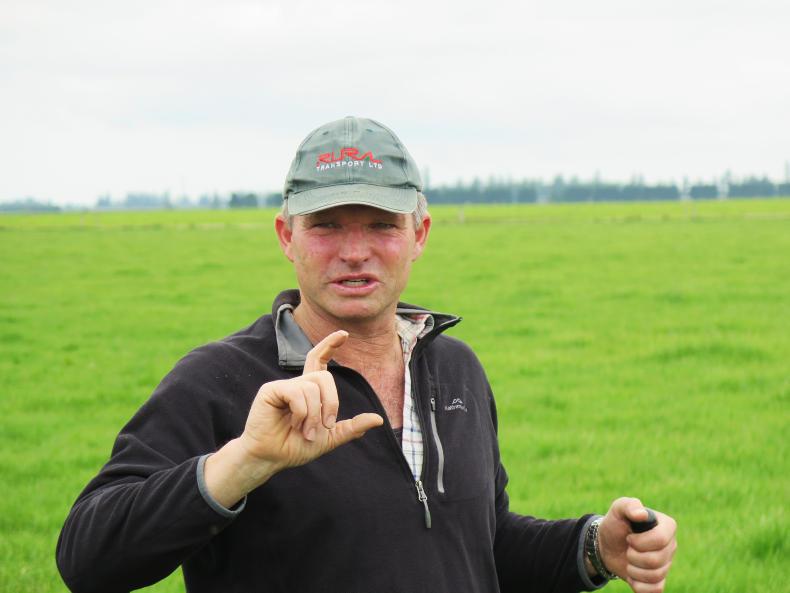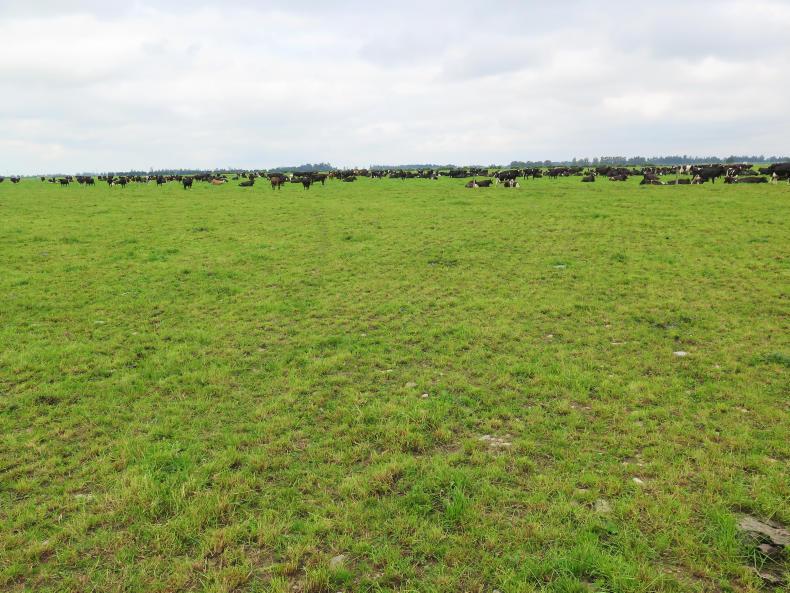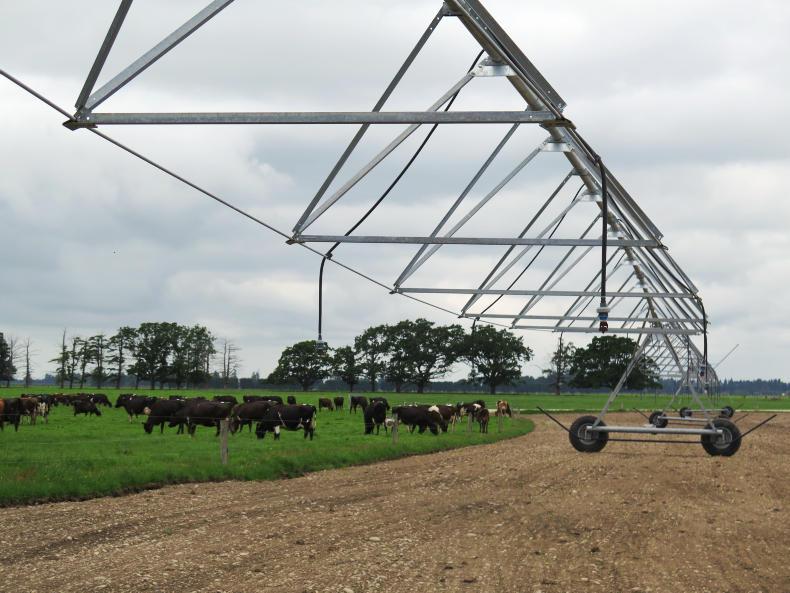Mark and Devon Slee have consistently been two of the top-performing farmers in Canterbury.
The Slee farming odyssey started in 1980 when Mark’s parents, Syd and Morrell, sold their farm in Southland and bought a 365-hectare dry land beef and sheep farm in Canterbury. This farm was subsequently converted to dairy in 1987 and was purchased by Mark and Devon in 1995.
In New Zealand, it is common for children to buy farms off their parents - sometimes at a reduced rate but never for free. As we have seen with Jamie Haultain and Mark Sing, sometimes family members will be employed as share-milkers or contract milkers on the family property before going on to buy the farm.
In New Zealand, it is common for children to buy farms off their parents - sometimes at a reduced rate but never for free
Since buying the original farm in 1995, Mark and Devon have expanded aggressively by buying neighbouring farms when they came up.
In 2001 they purchased 342 hectares and in 2002 a further 70 hectares. In 2005 they split the farm and set up a second farm by building a new 60-bail rotary. They purchased a further 73 hectares in 2007 and in 2008 they set up a third farm by building another 60-bail rotary. In 2012 they purchased 123 hectares of dairy support ground and in 2017 they bought a further 189 hectares.

Mark Slee, Canterbury, New Zealand
Today, the Slees are milking 2,778 milking cows, they have 150 carryover cows, along with 650 rising two-year-old heifers, 739 rising one-year-old heifers and 50 bull calves. Overall stocking rate is 3.22 LU/ha and all animals are wintered on the property. There is 720 hectares in the milking platform, which is split into three farms.
Change to pivot irrigators
“The biggest change for us came in 2001 with the introduction of pivot irrigators. Prior to the pivots, we were using border dyke irrigation from the Rangitata diversion race, which was built in 1945. Basically, water was channelled from the river across the land in canals and if we wanted to irrigate a field we would open sluice gates on the canal. It was labour intensive and inefficient. We went straight from border dyke to pivot and productivity increased by 25%,” Mark says.

Mark showing how to turn on the irrigator
Stocking rates on the milking platform increased from 2.5 cows/ha when using border dyke, to 3.8 cows/ha using irrigators. Today, there are 16 pivots on the farm, ranging in length from 150m to 600m.
I visited the Slees in 2015 and back then they were feeding close to 1,000kg of supplement per cow. Mark says they have stepped back from feeding a lot of supplement and are now feeding about 500kg of supplement per cow, including silage.
Another game-changer in the system is fodder beet. It seems most farmers in Canterbury are now growing fodder beet on between 5% and 10% of their milking platform. This is used as a supplement in autumn and fodder for the winter.
Mark says when they were feeding more supplement they took their eye off grass and often had to go topping fields to get quality back in the sward.

The carryover cows were going to return to get this residual back to 1,500kg total. Mark plated it at 1,600kg total cover.
We walked the field where one of the herds was grazing and Mark used the plate meter to measure residuals. While the field looked grazed out, the plate meter came back with a residual of 1,600kg/ha total cover, while the target is to graze to 1,500kg/ha.
So, the decision was made to bring cows back to the paddock. But the milkers weren’t going to come back, instead the Slees have 150 carryover cows that they use to clean up paddocks that aren’t at target.
These are cows that didn’t go in calf at the last season. After 10 weeks of breeding last year, 18% of the cows were empty. Anecdotal evidence suggests that the average empty rate in Canterbury is 16%. The empty rate on most of the farms I visited this week was between 14% and 18%. This signals to me that fertility in the New Zealand national herd is declining.
Mark says rather than sell these cows for $300 (€180), he will carry them over for a year and they will be worth $1,300 (€790) when in calf.
Despite being asked to graze down hard, the herd of Jersey crossbred cows were producing 2kg of milk solids per day. This time of year is the same as early June in the northern hemisphere, so cows are just coming off peak production. They are currently being fed 1.5kg of rolled barley in the parlour.
Mark doesn’t have a feed pad, instead, meal is fed in the parlours or silage is fed outside using a feed trailer if necessary. At 3.8 cows/ha, Mark needs a growth rate of 61kg/day just to sustain the herd.

Mark and Devon Slee's herd
While the farms measure grass weekly, the trigger for when the farm is in surplus is when post-grazing residuals rise. Mark explains that cows should be on a rotation length of about 22 days at this time of year. This means they graze 1/22 of the farm per day. If the pre-grazing yield is correct, they will graze this down to 1,500kg residual.
If the residual is higher, the cows must be grazing higher covers so this triggers the farm managers to take out paddocks for silage. If the residuals are lower than 1,500kg, it means growth is less than demand.
Mark says in this situation he will look at the forecast and if warm weather is coming he will tolerate a faster-than-normal round for a few days. If the forecast isn’t good, some supplement will be fed or cows will be moved from a farm tight for grass to a farm with enough grass.
Canterbury is probably the easiest place in the world to farm. The land is flat and very free draining and pasture growth rate is pretty much guaranteed no matter what the weather due to the irrigation. Summers are generally dry and hot so cow intakes are never compromised by wet grass.
Contract milkers
Two of the three dairy farms on the Slee holding are operated by contract milkers. These are paid a fixed sum per kilo of milk solids produced and in return they pay for all labour and parlour running costs and manage the farm. Dave Eccleston is one of the contract milkers employed by the Slees.
There are 14 full-time employees in the Slee business, including the contract milkers. Technically speaking, they employ the farm assistants. Most of the employees work a roster of 11 days on and three days off.
With such a large farm, the Slees dairy business is worth about $70m (€42m). There is $20m (€12m) of debt, so the equity rate is 71%, which is good given that the New Zealand average is about 50%. That said, a lot of this equity is only on paper, being in the value of land. Most people would speculate that land values are being kept artificially high. There aren't too many buyers for land at current prices.
Farm working expenses (all expenses before interest, capital repayments, tax and drawings) on the Slee farm are €3.20 per kilo of milk solids.
In 40 years’ time this land might be growing soyabean instead of grass for cows. The highest return now is in dairying but that might change in the future.
With interest payments of $1.20/kgMS, Mark says that when payout drops below $5.50/kgMS the return suffers and the farm is in break-even territory. All of the loans are on variable rate interest. Mark says the farm was paying about 75c/kgMS in interest prior to the recent support land purchase.
“We bought the extra support block last year from an environmental/strategic point of view. By buying this land it means that the farm is fully self-sufficient and we are not relying on other people to provide winter grazing.
“Land is expensive but is a very reliable investment and provides opportunity for different things. Who knows, in 40 years’ time this land might be growing soyabean instead of grass for cows. The highest return now is in dairying but that might change in the future.” Mark says.
Read more
Limerick family business claims Grassland Farmer of the Year title
Expensive feed but October milk price helps
New Zealand: meet share-milker Mark Sing
New Zealand: meet contract milker Jamie Haultain
Mark and Devon Slee have consistently been two of the top-performing farmers in Canterbury.
The Slee farming odyssey started in 1980 when Mark’s parents, Syd and Morrell, sold their farm in Southland and bought a 365-hectare dry land beef and sheep farm in Canterbury. This farm was subsequently converted to dairy in 1987 and was purchased by Mark and Devon in 1995.
In New Zealand, it is common for children to buy farms off their parents - sometimes at a reduced rate but never for free. As we have seen with Jamie Haultain and Mark Sing, sometimes family members will be employed as share-milkers or contract milkers on the family property before going on to buy the farm.
In New Zealand, it is common for children to buy farms off their parents - sometimes at a reduced rate but never for free
Since buying the original farm in 1995, Mark and Devon have expanded aggressively by buying neighbouring farms when they came up.
In 2001 they purchased 342 hectares and in 2002 a further 70 hectares. In 2005 they split the farm and set up a second farm by building a new 60-bail rotary. They purchased a further 73 hectares in 2007 and in 2008 they set up a third farm by building another 60-bail rotary. In 2012 they purchased 123 hectares of dairy support ground and in 2017 they bought a further 189 hectares.

Mark Slee, Canterbury, New Zealand
Today, the Slees are milking 2,778 milking cows, they have 150 carryover cows, along with 650 rising two-year-old heifers, 739 rising one-year-old heifers and 50 bull calves. Overall stocking rate is 3.22 LU/ha and all animals are wintered on the property. There is 720 hectares in the milking platform, which is split into three farms.
Change to pivot irrigators
“The biggest change for us came in 2001 with the introduction of pivot irrigators. Prior to the pivots, we were using border dyke irrigation from the Rangitata diversion race, which was built in 1945. Basically, water was channelled from the river across the land in canals and if we wanted to irrigate a field we would open sluice gates on the canal. It was labour intensive and inefficient. We went straight from border dyke to pivot and productivity increased by 25%,” Mark says.

Mark showing how to turn on the irrigator
Stocking rates on the milking platform increased from 2.5 cows/ha when using border dyke, to 3.8 cows/ha using irrigators. Today, there are 16 pivots on the farm, ranging in length from 150m to 600m.
I visited the Slees in 2015 and back then they were feeding close to 1,000kg of supplement per cow. Mark says they have stepped back from feeding a lot of supplement and are now feeding about 500kg of supplement per cow, including silage.
Another game-changer in the system is fodder beet. It seems most farmers in Canterbury are now growing fodder beet on between 5% and 10% of their milking platform. This is used as a supplement in autumn and fodder for the winter.
Mark says when they were feeding more supplement they took their eye off grass and often had to go topping fields to get quality back in the sward.

The carryover cows were going to return to get this residual back to 1,500kg total. Mark plated it at 1,600kg total cover.
We walked the field where one of the herds was grazing and Mark used the plate meter to measure residuals. While the field looked grazed out, the plate meter came back with a residual of 1,600kg/ha total cover, while the target is to graze to 1,500kg/ha.
So, the decision was made to bring cows back to the paddock. But the milkers weren’t going to come back, instead the Slees have 150 carryover cows that they use to clean up paddocks that aren’t at target.
These are cows that didn’t go in calf at the last season. After 10 weeks of breeding last year, 18% of the cows were empty. Anecdotal evidence suggests that the average empty rate in Canterbury is 16%. The empty rate on most of the farms I visited this week was between 14% and 18%. This signals to me that fertility in the New Zealand national herd is declining.
Mark says rather than sell these cows for $300 (€180), he will carry them over for a year and they will be worth $1,300 (€790) when in calf.
Despite being asked to graze down hard, the herd of Jersey crossbred cows were producing 2kg of milk solids per day. This time of year is the same as early June in the northern hemisphere, so cows are just coming off peak production. They are currently being fed 1.5kg of rolled barley in the parlour.
Mark doesn’t have a feed pad, instead, meal is fed in the parlours or silage is fed outside using a feed trailer if necessary. At 3.8 cows/ha, Mark needs a growth rate of 61kg/day just to sustain the herd.

Mark and Devon Slee's herd
While the farms measure grass weekly, the trigger for when the farm is in surplus is when post-grazing residuals rise. Mark explains that cows should be on a rotation length of about 22 days at this time of year. This means they graze 1/22 of the farm per day. If the pre-grazing yield is correct, they will graze this down to 1,500kg residual.
If the residual is higher, the cows must be grazing higher covers so this triggers the farm managers to take out paddocks for silage. If the residuals are lower than 1,500kg, it means growth is less than demand.
Mark says in this situation he will look at the forecast and if warm weather is coming he will tolerate a faster-than-normal round for a few days. If the forecast isn’t good, some supplement will be fed or cows will be moved from a farm tight for grass to a farm with enough grass.
Canterbury is probably the easiest place in the world to farm. The land is flat and very free draining and pasture growth rate is pretty much guaranteed no matter what the weather due to the irrigation. Summers are generally dry and hot so cow intakes are never compromised by wet grass.
Contract milkers
Two of the three dairy farms on the Slee holding are operated by contract milkers. These are paid a fixed sum per kilo of milk solids produced and in return they pay for all labour and parlour running costs and manage the farm. Dave Eccleston is one of the contract milkers employed by the Slees.
There are 14 full-time employees in the Slee business, including the contract milkers. Technically speaking, they employ the farm assistants. Most of the employees work a roster of 11 days on and three days off.
With such a large farm, the Slees dairy business is worth about $70m (€42m). There is $20m (€12m) of debt, so the equity rate is 71%, which is good given that the New Zealand average is about 50%. That said, a lot of this equity is only on paper, being in the value of land. Most people would speculate that land values are being kept artificially high. There aren't too many buyers for land at current prices.
Farm working expenses (all expenses before interest, capital repayments, tax and drawings) on the Slee farm are €3.20 per kilo of milk solids.
In 40 years’ time this land might be growing soyabean instead of grass for cows. The highest return now is in dairying but that might change in the future.
With interest payments of $1.20/kgMS, Mark says that when payout drops below $5.50/kgMS the return suffers and the farm is in break-even territory. All of the loans are on variable rate interest. Mark says the farm was paying about 75c/kgMS in interest prior to the recent support land purchase.
“We bought the extra support block last year from an environmental/strategic point of view. By buying this land it means that the farm is fully self-sufficient and we are not relying on other people to provide winter grazing.
“Land is expensive but is a very reliable investment and provides opportunity for different things. Who knows, in 40 years’ time this land might be growing soyabean instead of grass for cows. The highest return now is in dairying but that might change in the future.” Mark says.
Read more
Limerick family business claims Grassland Farmer of the Year title
Expensive feed but October milk price helps
New Zealand: meet share-milker Mark Sing
New Zealand: meet contract milker Jamie Haultain










 This is a subscriber-only article
This is a subscriber-only article










SHARING OPTIONS: